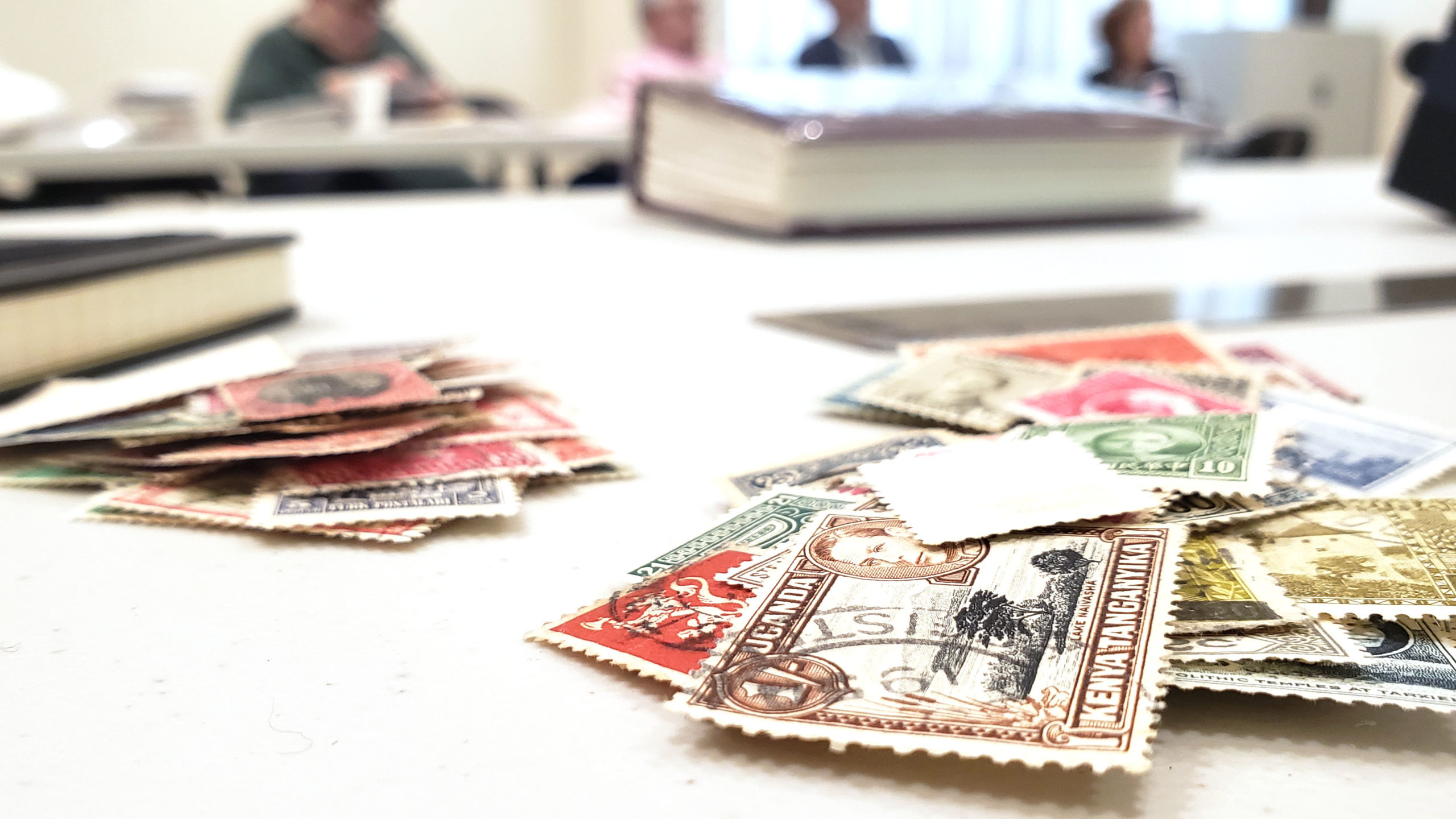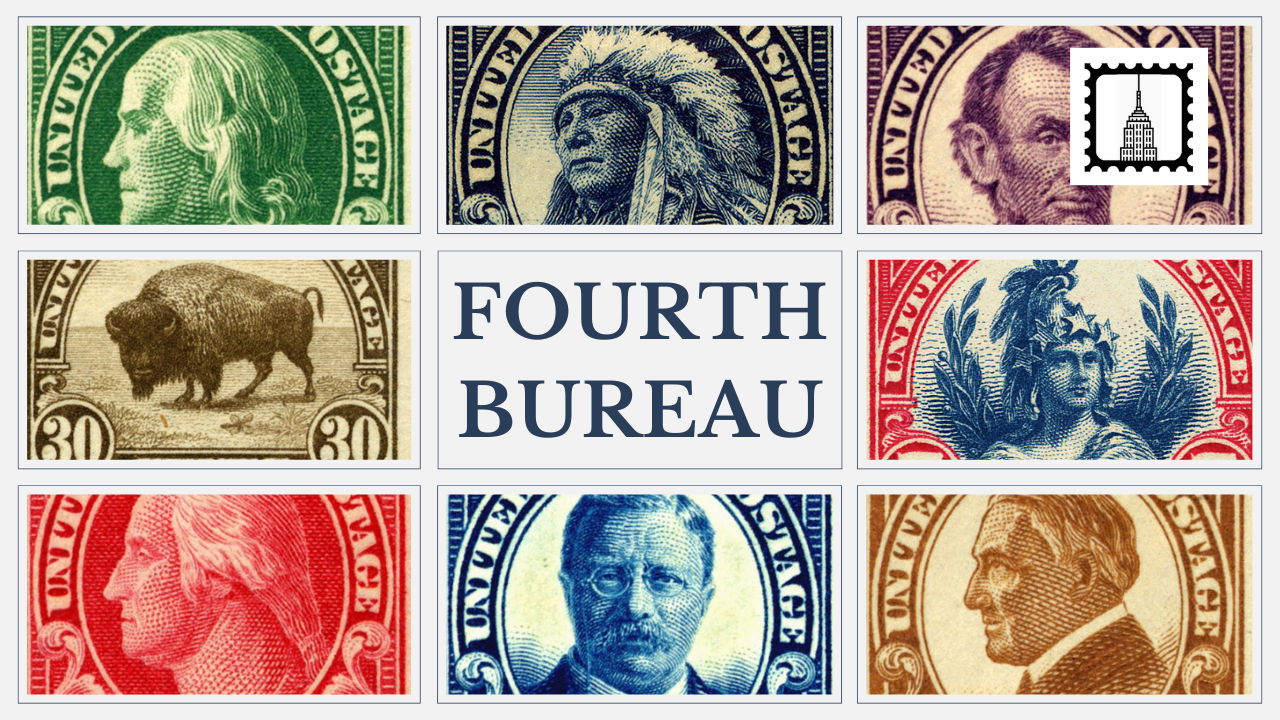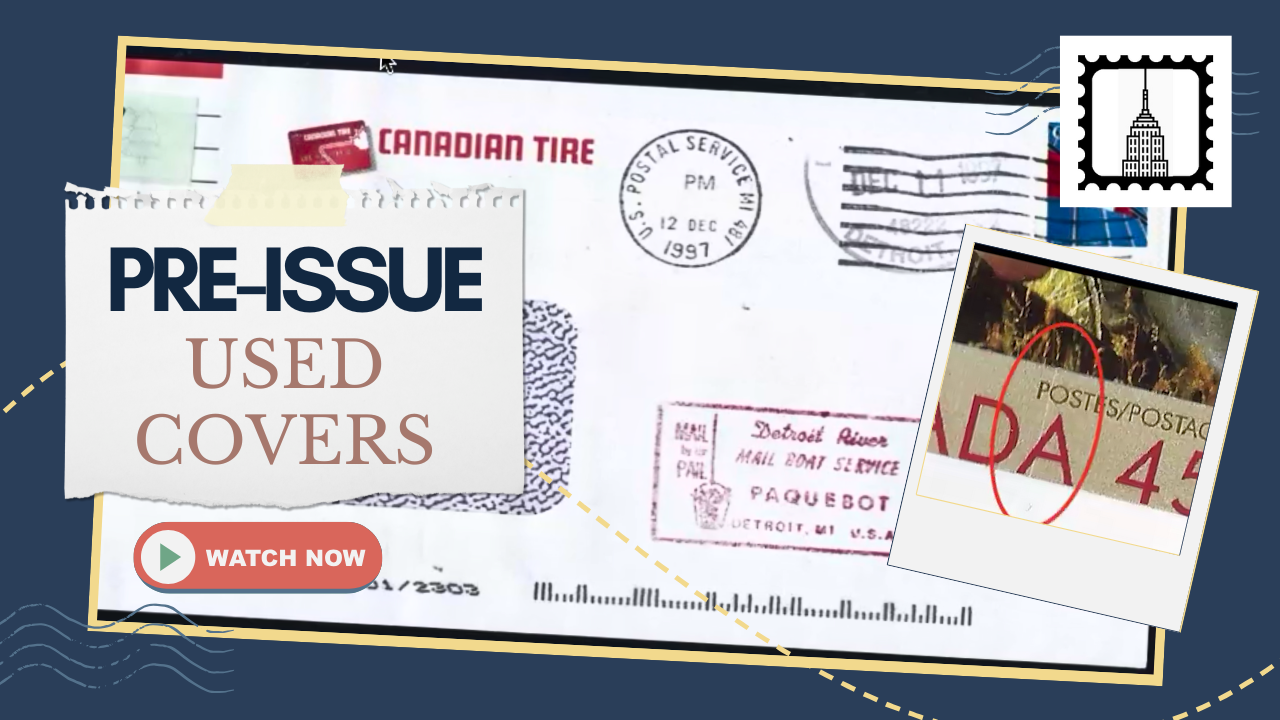In this presenation Arnie Janson elegantly explains offset lithography in stamp printing and stamp varieties that can result from the process.
Offset lithography, a key process in modern stamp printing, operates distinctly from engraved or gravure methods. This technique employs metal or polymer printing plates instead of the traditional lithographic stone, focusing on hydrophilic (water-attracting) and hydrophobic (ink-attracting) areas on the plate’s surface.
Process Overview:
- Plate Preparation: The printing plate, treated to create hydrophilic and hydrophobic areas, passes under a water roller. Water adheres to the hydrophilic regions, while the ink roller applies ink to the hydrophobic areas.
- Ink and Water Interaction: Unlike traditional lithography where excess water needs to be wiped off, offset lithography involves an intermediate step. The printing plate transfers ink to a rubber blanket cylinder, which then applies the ink to the stamp paper. This intermediate step prevents water from transferring to the paper.
- Printing Mechanics: The printing plate’s hydrophobic areas pick up ink while hydrophilic areas attract water. As the plate rotates, it contacts the rubber blanket cylinder, transferring the ink but not the water. The blanket cylinder then transfers the ink to the paper, ensuring a clean print.
Advantages of Offset Lithography:
- Longer Plate Life: Offset lithography extends the life of printing plates compared to direct lithography.
- Thinner Ink Layers: This method uses thinner ink layers, allowing for faster drying times and higher-speed printing.
- Direct Image Transfer: Unlike direct lithography, offset lithography uses a direct image on the printing plate, not a mirror image, simplifying the printing process.
Color Offset Lithography:
This variant involves feeding the paper from rolls rather than sheets, enhancing printing efficiency. The process involves four color stations (cyan, magenta, yellow, and black) for full-color printing, with each station contributing its color to the final image.
Varieties and Errors in Offset Lithography:
- Reverse Offset Varieties: Occur when the stamp image appears faintly on the back of the stamp. This can result from printing errors or stacking of stamp panes before the ink dries completely. Older engraved issues are more prone to this due to slower drying inks.
- Registration Errors: These errors happen when colors are not perfectly aligned, resulting in overlapping or misaligned colors. Dramatic registration errors can sometimes become collectible varieties, such as the famous “snow on the leaves” error.
Examples and Impact:
A notable example of reverse offset is seen in Canadian stamps where the black ink transferred to the back of the stamp, indicating an interruption in the stamp paper flow. Registration errors, like those on Imperial penny postage stamps, show significant shifts in color placement, highlighting the importance of precision in multi-colored stamp printing.
In summary, offset lithography revolutionized stamp printing with its efficiency, longer plate life, and superior image transfer quality. Understanding these technical details allows collectors and philatelists to appreciate the intricacies and potential errors in stamp production.






